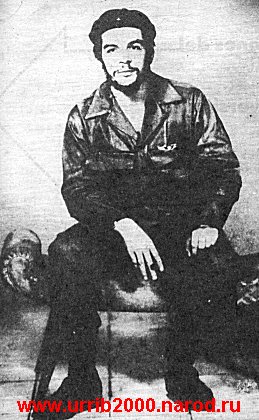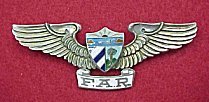

Che Guevara as Cuban PilotRuben Urribarres |
Che told his parents, that he knew that he would be called an adventurer, but he would be the kind that risks his skin in order to prove what he believed to be the truth, and that "he was searching for the truth through his stumblings." (1) As a consequence and convinced of the strong cement brought by practice, he grabbed the controls of aircraft and proved the truth, that he could be a pilot. Since his infancy, Che was interested in the history of his uncle Juan Martín de la Serna, a veterinarian by profession and a pilot, by passion. Juan Martín became one of the most famous pilots in Argentina, and was even chosen to be part of a flight to the Antarctic.
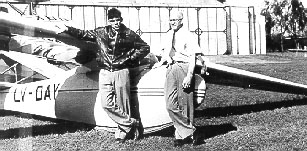 A los 21 años en el aeroclub "Albatros" de Buenos Aires, junto a su tio Jorge de la Serna (1)
A los 21 años en el aeroclub "Albatros" de Buenos Aires, junto a su tio Jorge de la Serna (1)
The uncle bought a Curtiss for acrobatics; but he died of an illness when Che was 5 years old. Che's mom, Celia, was also an aviation fan, when she was young. This familiar tradition also includes another of Che's uncles, Jorge de la Serna. In 1949, when he was 21, Che began to fly gliders on a regular basis, alongside his uncle, who was an aviation fan and also a member of the flight sailing club "Albatross" in Moron, Buenos Aires, where he took classes during twelve months on Saturdays and Sundays.
But it was in Cuba where Che became an aviator, fundamentally through the help of his official
pilot Eliseo de la Campa Tellechea, with whom he flew for the first time, according
to his Log Book (shown by his widow Haydée Balado Balmaseda), few days
after the triumph of the revolution, on 25 January 1959. Che flew from La Cabaña
Fortress (La Habana) to Nueva Gerona (Isla de Pinos), with Eliseo, and from there
to the Orlando Beltrán airport in Santa Fe, in La Habana. Soon after taking
off, Che asked Eliseo for the controls of the Cessna 182. Eliseo reminisces:
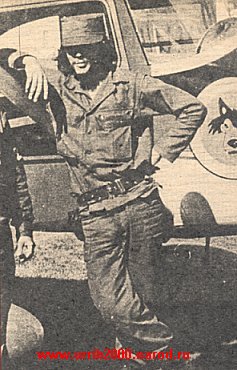
Che at the Cessna-182 "Lobito", that day he knew his pilot Eliseo de la Campa. Havana, january 25, 1959 (2)
"That day, we left from La Cabaña, and after applying power and heading towards Gerona, El Che asked me to let him handle the controls. Due to the coordination I observed during the turns, and his body position when making those turns, I became aware that he had aviation knowledge." (2)
They returned late that night, and Eliseo slept at La Cabaña. The next morning, Eliseo is readying the Cessna, when Che shows up and tells him that they now have to fly to Pinar del Rio. During this flight, Che tells him that he really wants to learn to fly. Beginning that day, Che asked Eliseo to be his pilot, and he agreed, becoming at the same time, his flight instructor. This pilot, with 5,000 flight hours of experience, with the passing of time was promoted to Captain, and was assigned to other work in 1975, dying of cancer in 1995, when he was 78 years of age.
Eliseo used his privately owned airplane, a Cessna-182, registration CUN-609, a four-place single engine, that he called "Mi Lobito" because it had a cartoon of a wolf painted on the fuselage; Che used to call it "La Tatagüita". Eliseo instructed the Comandante at La Cabaña and also during different work trips through the country, landing and take off instruction, but he considered that the Cessna 182 was not appropriate for the first flying lessons, and thus he talks with Capitan Orestes Acosta, a pilot who died heroically on 15 April 1961 while flying a T-33, and asked him to give Che flight instruction in a Piper PA-18.
Besides this, Guevara also received theoretical and practical orientations albeit sporadic, at Ciudad Libertad and other locations, from the aviators Pepito de Cárdenas (retired from Cubana de Aviación), Enrique Carreras. (now a retired General de Brigada from the FAR), and others.
Che soloed by the end of 1959. When a pilot soloed, the tradition was to wait for
him on the ground, and upon landing, he would be placed in a barrel full of water,
and dirt and oil were poured on him. Che knew this, and was waiting for it, but
due to the respect he commanded, no one dared to do it to him. Afterwards, Che
commented that he felt hurt, because he did not undergo the "ceremony" that was
mandatory for all other pilots.
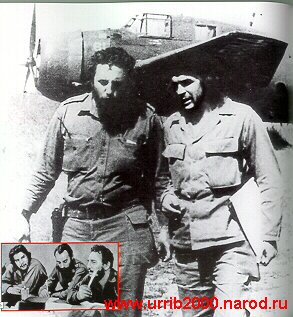 Izquierda: Con Fidel Castro en 1959, junto a un TBM Avenger de la Marina cubana. En el recuadro pequeño, Che, Camilo y Fidel. Camilo poco después
desaparecería en una tormenta sobre el mar volando un Cessna-310 (Cortesía de Tulio Soto)
Izquierda: Con Fidel Castro en 1959, junto a un TBM Avenger de la Marina cubana. En el recuadro pequeño, Che, Camilo y Fidel. Camilo poco después
desaparecería en una tormenta sobre el mar volando un Cessna-310 (Cortesía de Tulio Soto)
Starting then, Eliseo gives Che transition training on the Cessna-182, Cessna-310, Antonov An-2, Let L-200 Morava and Zlin Z-326 Trener Master. The guerrilla chief flew on work trips all over the island, flying himself in many occasions, although always alongside his pilot.
The first example of the Zlin Z-326 Trener Master was given as a gift to Cuba by Czechoslovakian officials, and it is in this acrobatic aircraft that Che had an accident. He flew on this airplane to Varadero, to observe Cuban pilots flying the MiG-15, but before landing, Che performs some acrobatic maneuvers. But, upon landing, they stall on one of the wheels, and drags one of the wings on the runway. Those present to receive him, jokingly congratulated him on his "original three-point landing" and tell him "this is the first time we see an airplane perform acrobatics on the ground." Che got mad, and told his pilot: "Look Eliseo, give the Trener to the guys at the Escuela de Aviación -Aviation School -, because this airplane is for experienced pilots, and I won't fly it anymore." (2)
Earlier, for the 2 January 1962 parade to commemorate the 4th Anniversary of the triumph of the revolution, Che Guevara flies in the leading airplane of a formation of 18 Z-236s flying a "V" for victory formation. With him was pilot Luis Hernandez Oces -already deceased- who said that a day earlier, he was informed that Che would be his companion for the flight. He knew that Che was a graduated aviator, but had never personally spoken with him. On 2 January at 9:00 AM he was introduced to Che in Ciudad Libertad from where they would be flying towards the Plaza de la Revolucion, but they just exchanged brief greetings. Luis occupied the front cockpit while the Commander was sitting in the rear. He was really worried, because the Trener Master is an airplane for High Level pilots, really sensitive, and during acrobatic flight, it demands extreme precision and practice.
- Let me have the controls, Commander, Luis said.
- I won't put my hands on them; you fly it, answered the guerrilla chief. (1)
Thus, Che celebrated albeit anonymously, because it was neither announced at the Plaza nor was it published in the press of the time. Soon after the collective maneuvers were a complete success and with the formation broken in order to head back to base, Luis heard Che's voice through the headphones, asking him for the controls.
-The airplane is yours, he said...
 The Commander did not answer at all, took over the controls, flew for a few minutes
and made turns, dives and ascents. Seconds laterLuis requested that they should
land, while on the ground, several of his companions were impatiently following
the airplane's trajectory. "When I tried to do things impeccably - Océs
said - the nerves betrayed me. As a result of it, we could have had a fatal accident
because upon landing, the airplane jumped and it was really close to leaving the
runway. We call that, "despistarse" (to lose track, to miss the runway). It is
simply put, something a novice would do. Students and instructors were witnessing
this. I felt down. While we were walking alongside the group that joined us as
a welcoming or reception, towards the base building, I noticed that Commander
Guevara was looking at me from the corner of his eye, as if he -as an aviator
- was internally scolding me, and commented in a loud voice: Listen to me, pilot,
don't you worry at all. You acted correctly, and in reality the one making the
landing, was me." (1) Luis confessed that upon hearing this, he breathed a sigh
of relief and felt that his pride and prestige as an acrobatic pilot, were safe.
The Commander did not answer at all, took over the controls, flew for a few minutes
and made turns, dives and ascents. Seconds laterLuis requested that they should
land, while on the ground, several of his companions were impatiently following
the airplane's trajectory. "When I tried to do things impeccably - Océs
said - the nerves betrayed me. As a result of it, we could have had a fatal accident
because upon landing, the airplane jumped and it was really close to leaving the
runway. We call that, "despistarse" (to lose track, to miss the runway). It is
simply put, something a novice would do. Students and instructors were witnessing
this. I felt down. While we were walking alongside the group that joined us as
a welcoming or reception, towards the base building, I noticed that Commander
Guevara was looking at me from the corner of his eye, as if he -as an aviator
- was internally scolding me, and commented in a loud voice: Listen to me, pilot,
don't you worry at all. You acted correctly, and in reality the one making the
landing, was me." (1) Luis confessed that upon hearing this, he breathed a sigh
of relief and felt that his pride and prestige as an acrobatic pilot, were safe.
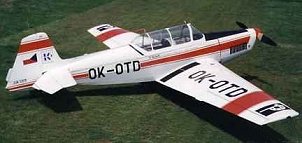 |
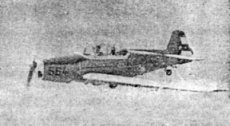 |
|
|
|
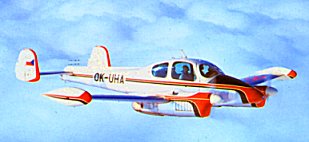 |
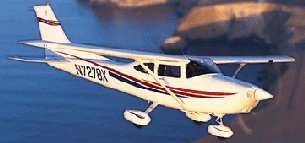 |
|
|
|
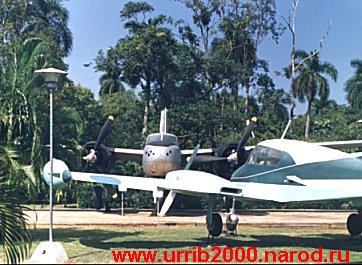 |
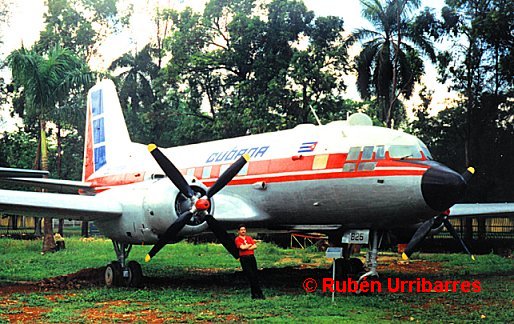 |
|
|
|
Alexander Alexeiev, USSR ambassador to Cuba during the first years of the Revolution, said that El Che invited him during mid-1960, to accompany him to Oriente, while flying the Cessna 182. He was somewhat afraid, because not long before, while El Che was driving, they had an automobile accident with another vehicle, both coming out unharmed. Guevara, when seeing him so nervous jokingly told him to be at ease, because in Cuba there were so few airplanes, and thus the danger of a mid-air collision was minimal.
"My fears -wrote Alexeiev- were dispelled when the pilot sat next to the Commander but limited his role to that of an observer, since El Che performed formidably." (1)
Zobeida Rodríguez (Mimí), and María Teresa Sánchez Arrieta, told historians Adys Cupull and Froilán González -authors of a dozen books on Ernesto Guevara, two anecdotes. Mimi told them that one afternoon the Commander invited her, in Ciudad Libertad, for a short flight with her children, in an airplane, something that some officers present were afraid to do. When they returned, Che told them to learn from the "valiant example from the woman." Maria Teresa said that one morning there was suck a ruckus, when they saw Che "had climbed in an helicopter." (1)
On a certain occasion they flew to Pinar del Rio, for a meeting with other country leaders, and on their way back Che invited his compañeros to fly in his Cessna-310, but they refused, arguing that they had to return urgently to La Habana, and for this reason they would have to fly the Ilyushin Il-14, which was faster. Eliseo says: "When I got in, I realized that he was planning something; he did not like to have his abilities as a pilot, questioned, because he felt a real passion for aviation." (2)
He told him "They argue to be in a hurry, as if this did not fly". The Il-14 had priority for departure, and this would make it difficult to get ahead of it. Since El Che soloed, Eliseo rarely flew, he always took the right seat. But in this occasion, he left to Eliseo the take-off and landing. Che's Cessna 310 was not heavily loaded, and in order to gain some time, he takes off without taxiing, with a tail wind, and they kept flying towards La Habana in complete radio silence, so as not to be discovered. When they landed, they taxied quickly and shut the engines off just when the Il-14 was arriving.
Che took off running, and took the airplane's ladder from the Aviation School cadets; he told Eliseo, "Push there!" and between the two of them, they brought it up on the Il-14. When the door opens and his compañeros disembarked, they are astounded:
-!Eh! Che!, But, you are here??!!!
El Che answers:
-Yes, since you told me that you "were in a hurry", I thought that the guys were going
to take too long moving the ladder, so I came running to set it up myself... (2)
He was strict regarding the use of the airplane for personal affairs. On a certain occasion, Che organized the building of a runway South of Pinar del Rio, with 400 men among which there was Alvaro Prendes. The runway was first used by Che himself before it was completed, when he arrived with Eliseo in the Cessna 310. Days later Prendes has a permit, and notices that all of a sudden Eliseo arrives and lands, alone. Prendes approaches and Eliseo tells him, smiling:
-Commander, I am here to pick you up and bring you to La Habana.
They take off towards La Habana, and Eliseo drives Prendes to his house, in his own automobile, and when he was leaving, tells him:
-Commander, every time you leave the camp, let me know and I'll try to come and pick you up.
He stares at him, and with some hesitation, adds:
-Look, he called me and told me to come and get you ... and let me tell you, he is very strict regarding the use of the airplane. I am going to tell you something . . ....the Commander feels a great passion for aviation, and when he pilots, I am only supervising him, because some times he is a little daring, like once when he was piloting, and we saw this huge cloud in our route. He began inching closer and closer to take a look at it, to the point that I could not control myself any longer, and I said: If you get closer, both you and I will stay in space, with only the controls in our hands! (3)
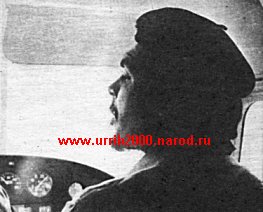
Che flying with Eliseo, in the co-pilot seat (2)
|
||
Eliseo tells Prendes that in one occasion when they were cutting sugar cane at the "Ciro Redondo" camp, near Ciego de Avila, he was notified that his mother was gravely ill at La Habana. Eliseo worries, because he will have to travel by car, and will not make it in time before his mother dies. El Che sees him, but doesn't says anything. But a few minutes later approaches him and says: "Eliseo, we must take this man, quickly, to La Habana, because he has hurt his foot with a machete, and here in Moron he might not get adequate attention and he could bleed to death" (3) Once in the airplane, Eliseo asks the peasant to show him his "wound." It was a small cut, one of those that can be cured with a little iodine. El Che made up that excuse in order for Eliseo to be able to fly and see his mother in La Habana.
Eliseo de la Campa explained in an interview with a newspaper that once, when returning from a flight to Oriente, while he was putting the chokes to the airplane, the Commander dedicated a book to him, thus: "Guerrilla Warfare:" "To the very well 'siquitrillado' (*) guerrilla in spirit and companion for many great hours in the skies of Cuba, Che" (1)
El Che was always happy onboard airplanes, but not so during the tragic hours in October 1959, during the search, together with Fidel, of the Cessna-310 of Commander Camilo Cienfuegos. And, as an aviator, remembered this way, pilot Luciano Fariñas, who disappeared together with his great companion from the Sierra Maestra:
"There are no safe airplanes, because pilots cannot acquire all the necessary experience and because he had to fly, overloaded with work" (1) an appreciation backed up by his own experience at the controls of aircraft as fragile as the Cessna itself.
Eliseo related, that El Che cared regarding the maintenance of the airplanes they flew. In order to control the exploitation of equipment and to give it timely maintenance, he demanded that a control be kept on all the flights, where the itinerary was written, number of landings, length of flight, fuel and oil consumption, and the names of the people who accompanied him.
El Che also flew at night. After his death, Eliseo received another book, Antoine de Saint Exupéry's "Night Flight" with this dedication from Guevara: "To Eliseo, friend and companion in the first night adventure of 'chirriniar.' As a memento forever. Che, Habana, 65" (2) Such an adventure took place on 3 February 1959, while flying from Santa Clara to Ciudad Libertad together with Aleida March, Che's wife, and became the first night flight together with Eliseo and the fifth of all they shared. With regards to "chirriniar" he referred to "chirrín", as Eliseo also called his Cessna-182. In one of those night flights they faced danger, when together with Eliseo, Aleida March and his bodyguard Hermes Peña, returned one night to Bayamo and the airport did not have lighting. With a great deal of work, they managed to land thanks to a comrade who saw them circling the area for too long, and marked the runway with some lamps.
El Che was always happy onboard airplanes, but not so during the tragic hours in October 1959, during the search, together with Fidel, of the Cessna-310 of Commander Camilo Cienfuegos. And, as an aviator, remembered this way, pilot Luciano Fariñas, who disappeared together with his great companion from the Sierra Maestra:
"There are no safe airplanes, because pilots cannot acquire all the necessary experience and because he had to fly, overloaded with work" (1) an appreciation backed up by his own experience at the controls of aircraft as fragile as the Cessna itself.
Eliseo related, that El Che cared regarding the maintenance of the airplanes they flew. In order to control the exploitation of equipment and to give it timely maintenance, he demanded that a control be kept on all the flights, where the itinerary was written, number of landings, length of flight, fuel and oil consumption, and the names of the people who accompanied him.
The strict maintenance made it possible for El Che to log more than 1,000 flight hours without any possibilities of accident due to the status of the equipment. He was not reckless when flying. If he encountered bad weather enroute, he would return to the airport.
In another opportunity the pilot himself explained that when arguing with the Commander that it was prudent to cover certain distance by road, Che disarmed him with this words:
"I know, that's not a new discovery, but . . .Don't you realize that it would deprive me from taking the controls of the airplane for a while, and in consequence, the only possibility of enjoying a more pleasant time?" (1)
But he never flew the MiGs, although he dreamed with it. He told so, to Alvaro Prendes:
-Look, all I ask is that you take me up for a spin in one of those MiGs that I have never flown. It is a deal, you know... (3)
But he didn't have the time, and they never saw each other again. During those days, Che lands in Ciudad Libertad, and Eliseo leans against the airplane's wing while waiting for Che to exit and leave in his automobile, as usual. But upon returning to the runway, he sees Che, who comes up to him, and embraces him. This, together to what happened the day before, when Che asked him to shoot some photos together with him and his family, told Eliseo a lot, although they did not talk about it. Some time later, El Che would leave Cuba forever.
Sources:
1- Luis Hernández Serrano. "Comandante del aire". Juventud Rebelde, 1998.
2- Julio A Martí y Casilda Pereira. "El Che, piloto aviador". Revista Moncada, mayo de 1978.
3- Álvaro Prendes. "Prólogo para una batalla". Editorial Letras Cubanas, La Habana, 1988.
4- Author's Archives
(*) Siquitrillados was what large landowners
or businessmen were called, and whose properties were nationalized by the Revolution.
El Che jokingly made reference to the voluntary donation that Eliseo de la Campa
made, of his private cowherd.
![]() Related articles
Cuban Aviators.
The MiG-15 in Cuba
Cuban Military Aviation History
Cuban Cicil Aviation in 1959-1975.
1958. The Fuerza Aerea Rebelde (Rebeld Air Force -FAR) - The guerrilla aviation
1958. The last operations of the FAEC against the guerrilla
Related articles
Cuban Aviators.
The MiG-15 in Cuba
Cuban Military Aviation History
Cuban Cicil Aviation in 1959-1975.
1958. The Fuerza Aerea Rebelde (Rebeld Air Force -FAR) - The guerrilla aviation
1958. The last operations of the FAEC against the guerrilla
![]() External link
Cuban Military Forum
External link
Cuban Military Forum
|
|
|
|
|||

|
|
